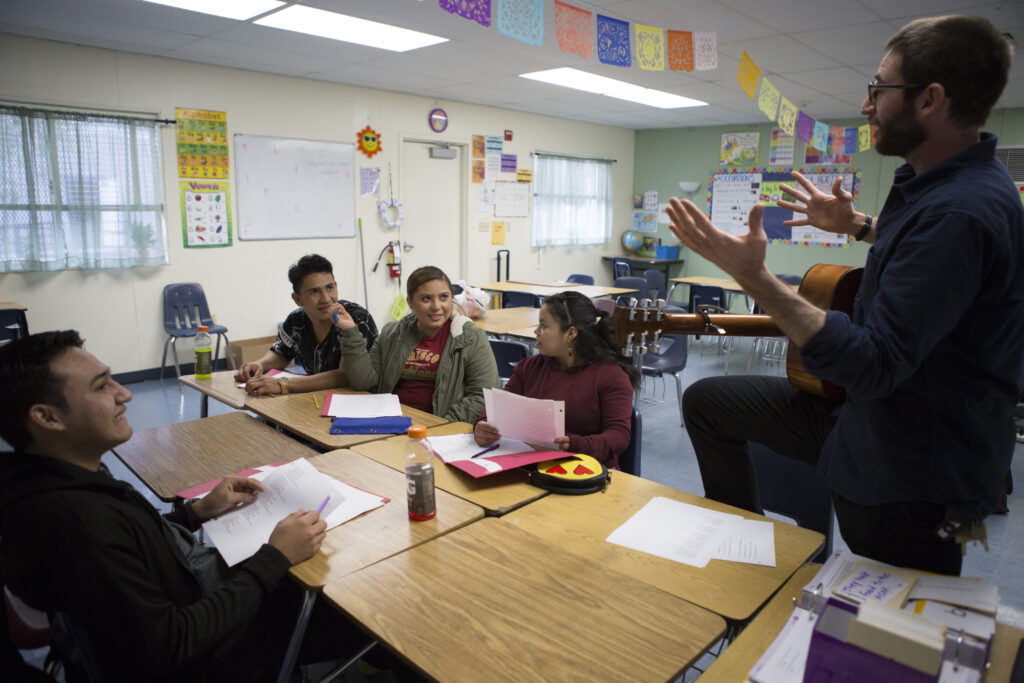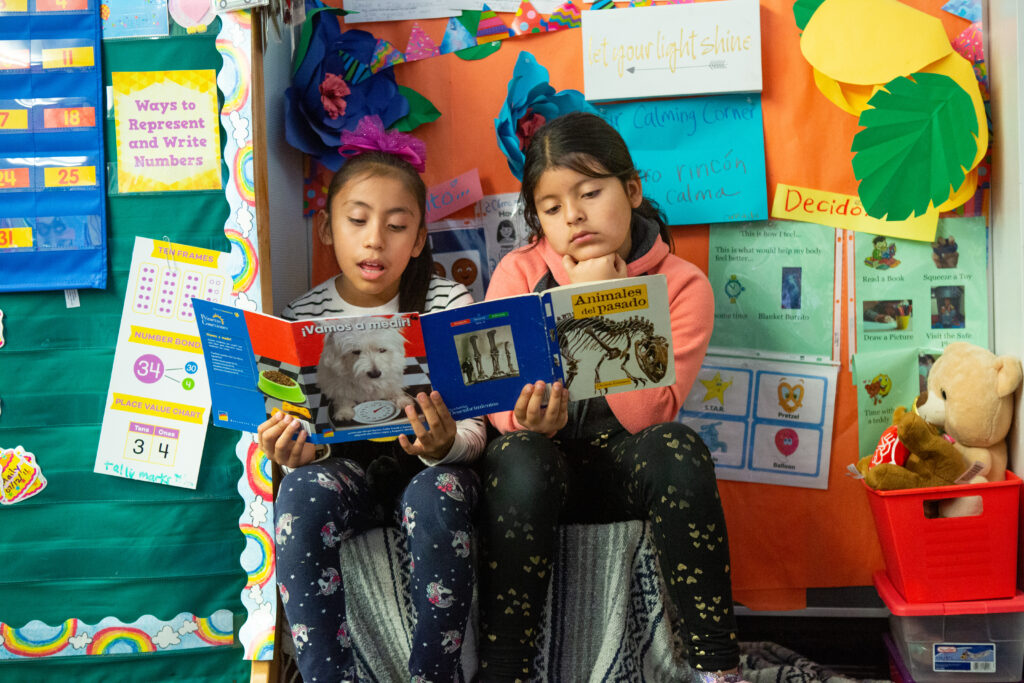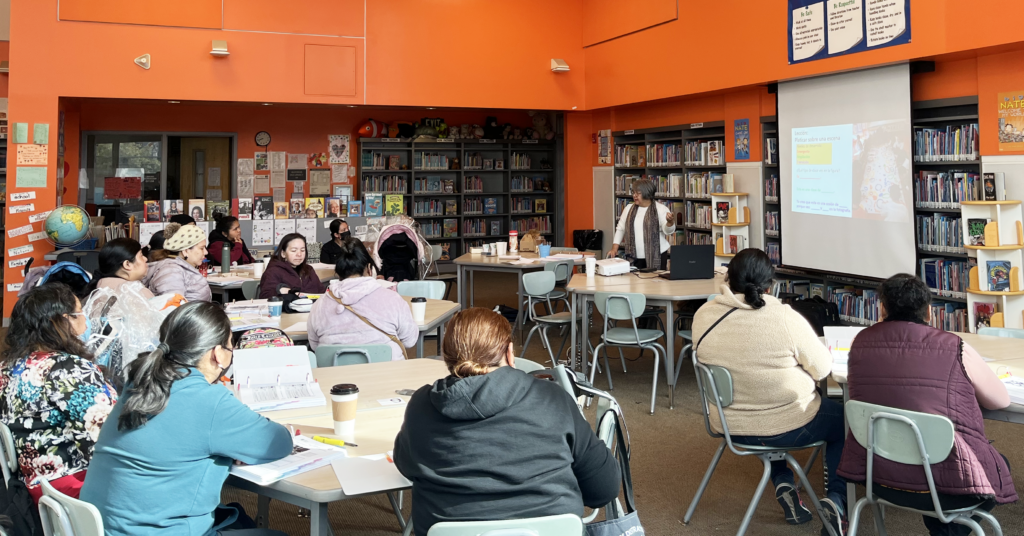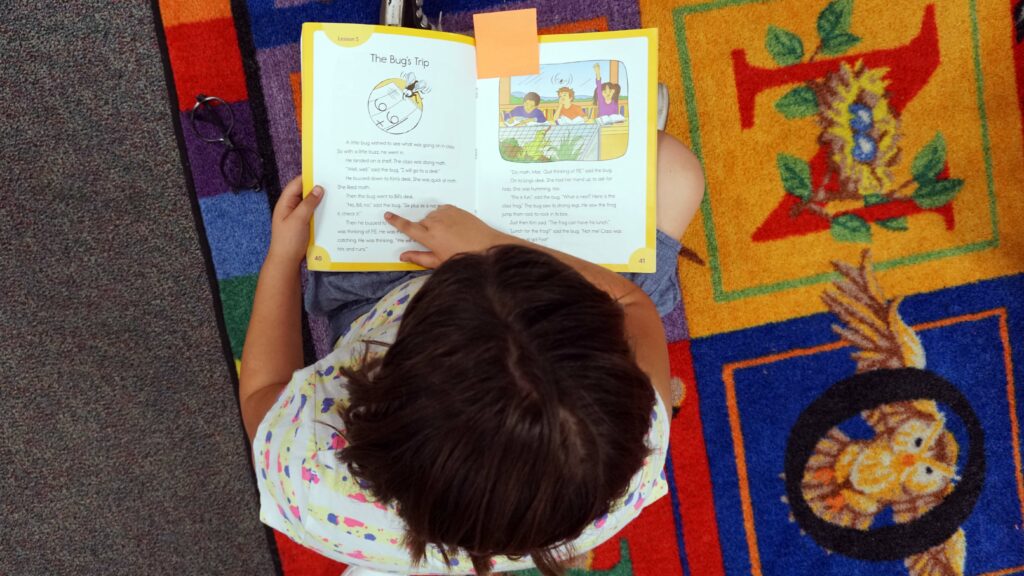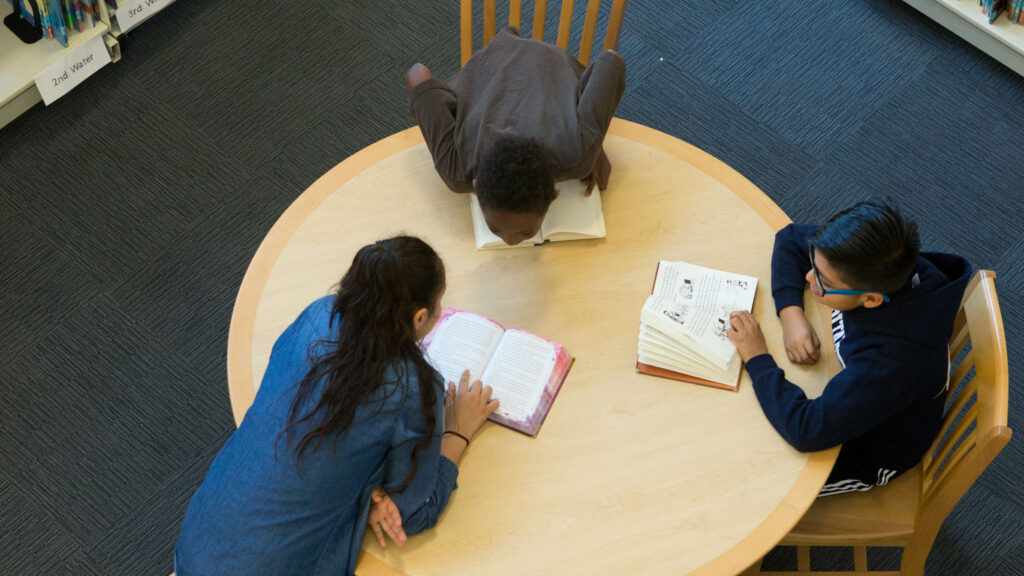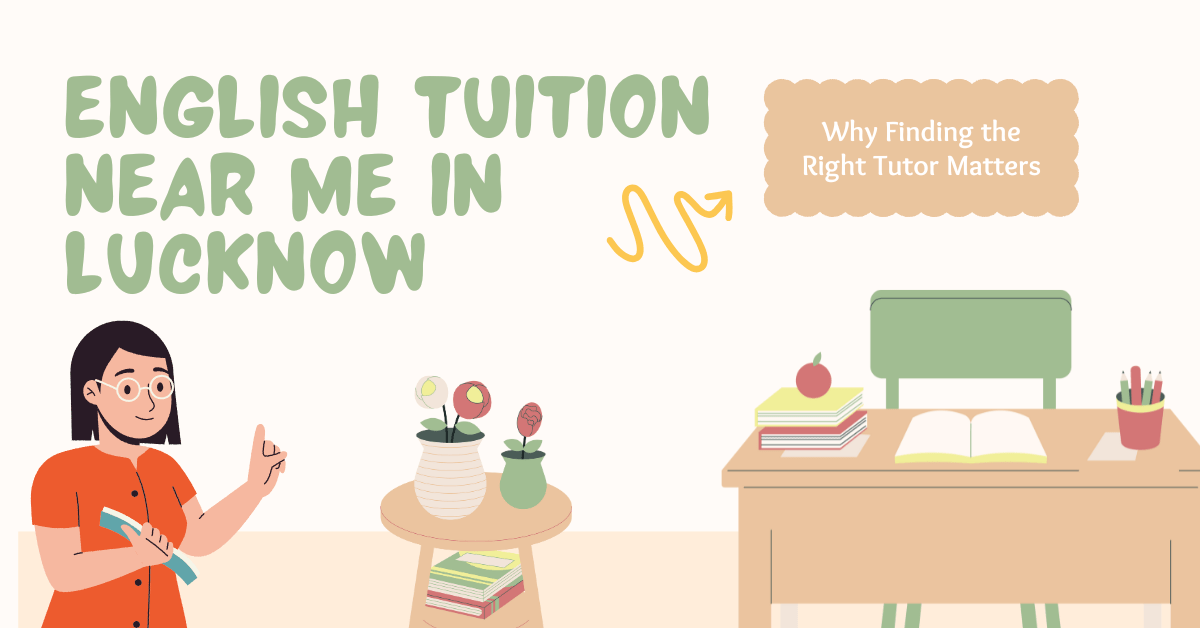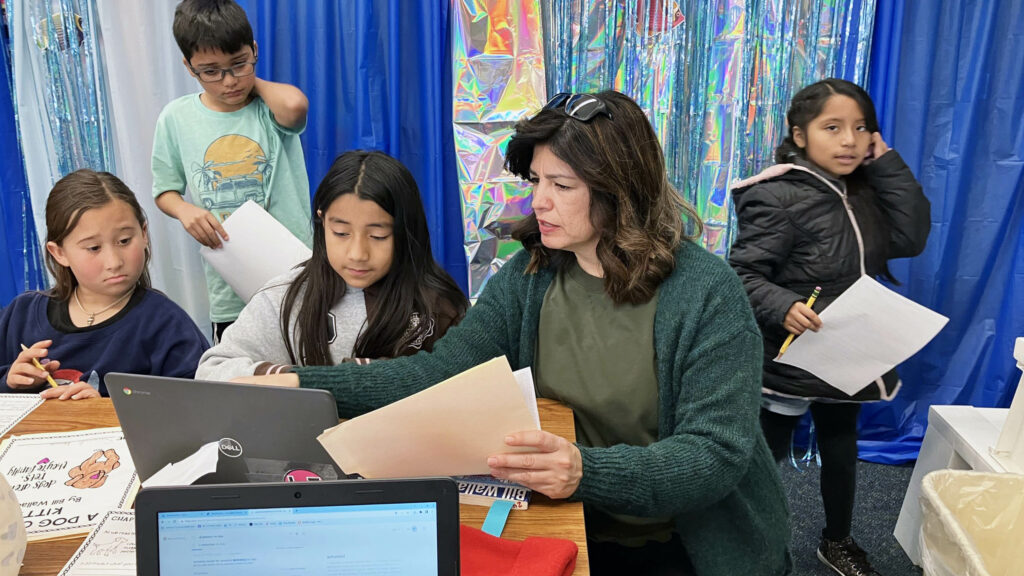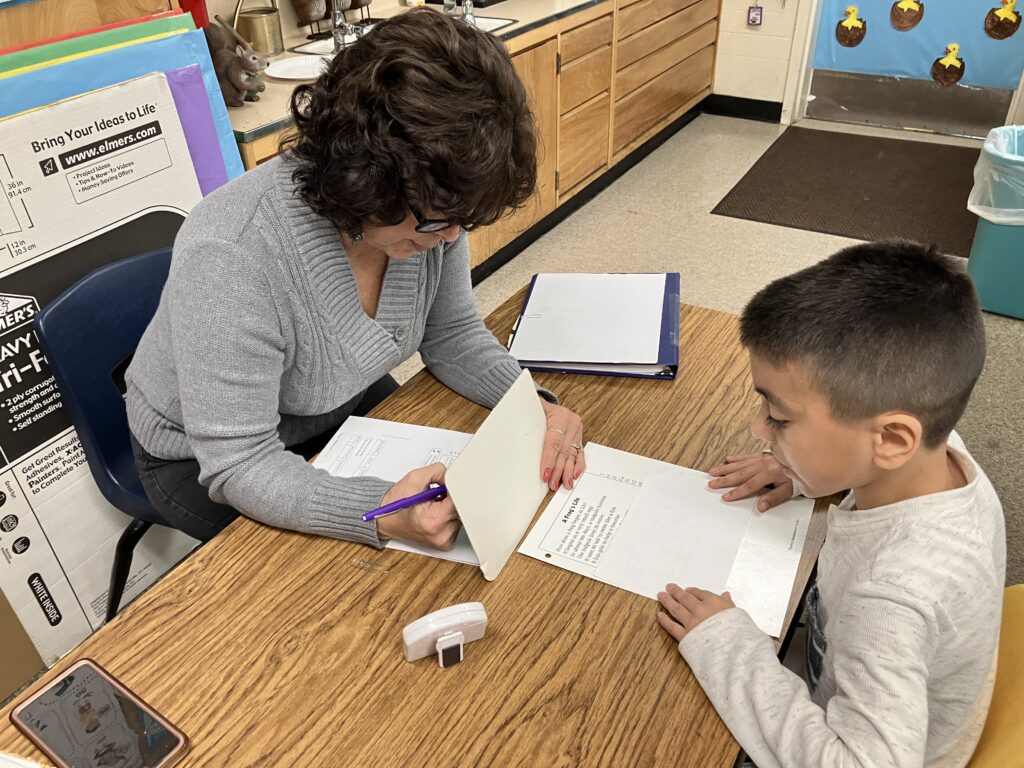
Students at Rudsdale Continuation High School in Oakland, California.
Credit: Anne Wernikoff for Edsource
Este artículo está disponible en Español. Léelo en español.
High school senior Martha Hernandez was born in Baja California, Mexico, and came to the U.S. when she was 10 years old, in fifth grade. She was still considered an English learner when she entered high school, based on California’s test of English proficiency.
When students are classified as English learners, they must take English language development classes to improve their language skills, in addition to English language arts and all other academic classes.
But at Hernandez’s high school, Mountain Empire High School in the mountains of rural San Diego County, English learners enroll in English as a second language classes through the local community college. They earn college credit while learning English.
Researchers and advocates say that dual enrollment — taking college courses during high school — can increase rates of graduation, college enrollment and college success. Yet students who are still learning English in high school often face barriers to dual enrollment courses.
According to one study by Wheelhouse: The Center for Community College Leadership and Research at UC Davis, 10% of English learners had taken at least one community college class while in high school, compared with 18% of all students.
English learners are less likely than many other groups to finish the required courses for entering UC and CSU — known as A-G requirements — and to attend college in the first year after graduating from high school. Only 16.8% of students not proficient in English were marked as “prepared” for college and career on the California School Dashboard in 2019, compared with 44.1% of all students.
Hernandez was surprised to get college credit for her English language classes and she says it inspired her to do well in the courses.
“It benefits me more, because if I’m going to learn something, I should gain something, too,” Hernandez said. “I guess that’s a good strategy to make people motivated.”
She says the class helped her learn how to compose a paragraph, structure an essay and give a presentation in English.
After sophomore year, Hernandez tested out of the program. No longer considered an English learner, she enrolled in both AP English and AP U.S. history her junior year. She’s now a senior, and she plans to go to a four-year college after graduation to study to become a doctor.
This dual enrollment program for English learners offered by Mountain Empire Unified and Cuyamaca College is one of several highlighted in a 2020 report by the nonprofit organization Jobs for the Future.
“English learners can rise to the challenge and have better academic outcomes when they have the opportunity to do things like take college courses,” said Sarah Hooker Bentley, director of population-specific strategy for JFF and one of the authors of the report.
Often, Bentley said, district staff believe English learners cannot enroll in dual enrollment courses because they need to prioritize English language development courses or credit recovery courses if they recently arrived from other countries.
“You really can build in the dual enrollments at the same time you’re doing all the other things,” she said.
The report recommended specific strategies as especially beneficial for English learners. One is enrolling these students in college-based English language courses like the ones Hernandez took at Mountain Empire High School.
English learners can also do well if they are able to enroll in advanced college courses in their native languages — Spanish literature, for example, or in courses related to their career interests.
It is crucial to provide extra support for English learners to help them understand vocabulary and grammar that they may need to succeed in college-level courses, Bentley said.
“It’s especially unique if it’s really provided by teachers who have been trained in English learner education,” Bentley said. “That’s the distinction that makes it especially effective for English learners.”
Dual enrollment for English learners works best when courses are specifically designed for them, said April Moore, president of the California Coalition of Early & Middle Colleges, which is dedicated to dual enrollment.
She said English learners need extra time to practice their language skills with each other, learn academic language and help with learning how to take notes.
“If we don’t strategically and mindfully design these pathways for various student groups, we run the risk of perpetuating the gaps that we already see in the data with who is achieving and who is not yet achieving and needs additional support,” Moore said.
Mountain Empire and Cuyamaca College have been offering college courses in English as a second language for high school English learners since 2018.
Superintendent Patrick Keeley said the district noticed that the students enrolled in college English courses had fewer D’s and F’s overall than English learners who were not enrolled in college classes.
“We were trying to draw a correlation: Was that because they were building confidence in themselves that they could achieve in other areas?” Keeley said. “When a student dual enrolls or concurrently enrolls in a college course, I think that has a positive impact for that student because they’re building confidence for themselves taking a college course and walking out with the knowledge, skills and belief that ‘I can go to college.’”
Keeley said students’ scores have also improved on the English Language Proficiency Assessment of California – a test that all English learners must take every year until they earn a high enough score to be considered proficient. He said that 72% of English learners at Mountain Empire High School increased at least one level on the test from 2021-22 to 2022-23. Statewide, 47.5% of English learners increased one level in 2022.
The college courses are held on the high school campus, but once a semester, the students enrolled in ESL courses visit the Cuyamaca College campus.
“They get tours of the different programs at Cuyamaca,” Keeley said. “It’s a way to welcome them to the school and affirm that they are college students.”
Moore said some early and middle colleges also offer dual enrollment English language classes.
“I think that would be a great recommendation or goal for [more] schools to aspire to,” Moore said.
Many school districts are hesitant to offer this type of classes for English learners, in part because the requirements for college-based ESL courses are so different from the requirements for teaching English language development to students in high school, Moore said.
For example, the California Department of Education requires a different number of hours of English language development for students in K-12 than the number of hours required in a college-level course.
Lack of information is also a barrier to English learner participation in dual enrollment courses.
James Espinoza, principal of Middle College High School in San Bernardino Unified School District, said more district staff need to be made aware that they can and should design dual enrollment courses for English learners and other under-represented groups.
“People don’t know they’re supposed to actually target students that are first generation and under-represented. A lot of the success rates are students that might be successful already,” Espinoza said.
Bentley said the more adults at schools know about dual enrollment opportunities for English learners, the better.
“Whether it’s a guidance counselor, their ELD teacher, or a newcomer liaison when a newcomer first starts high school, if those individuals are not well-connected or don’t have strong understanding or knowledge of dual enrollment opportunities and the potential benefits for English learners, it’s even more difficult for that information to get down to students and families,” she said.
